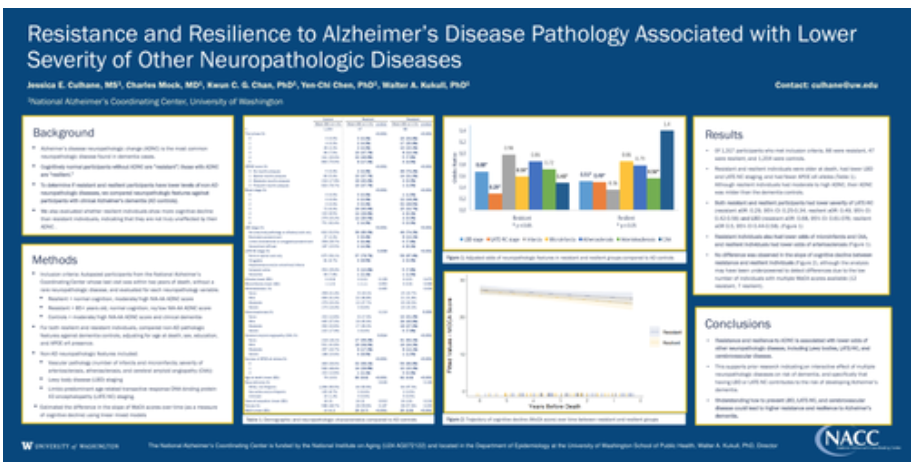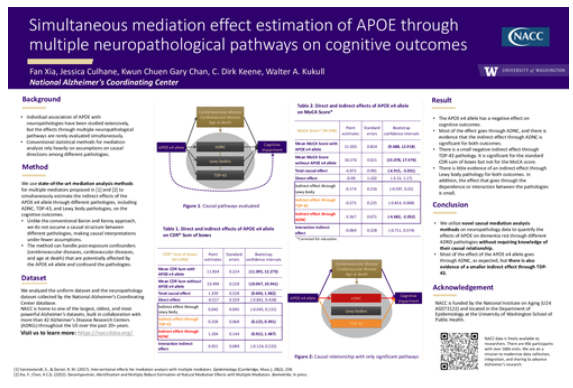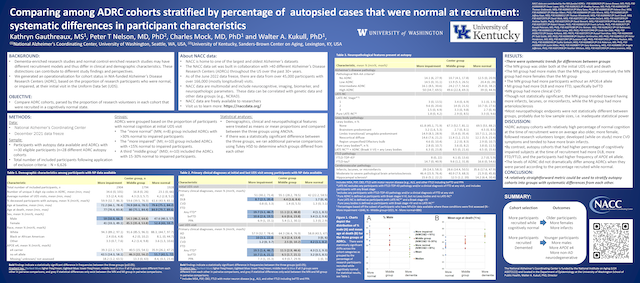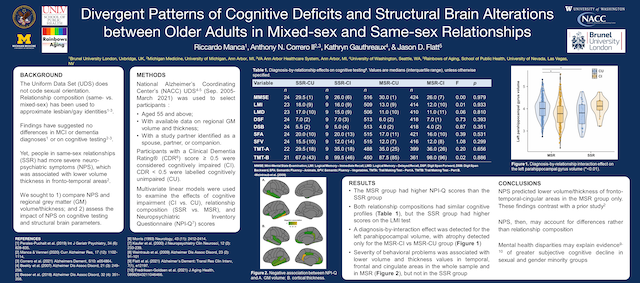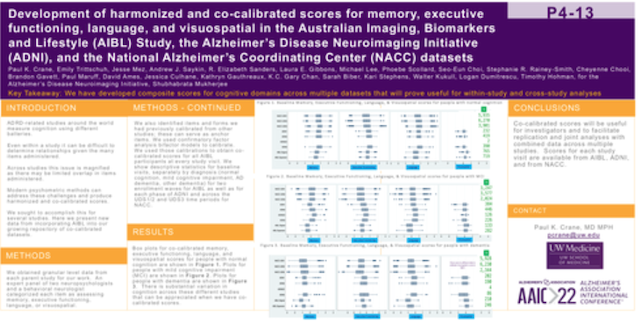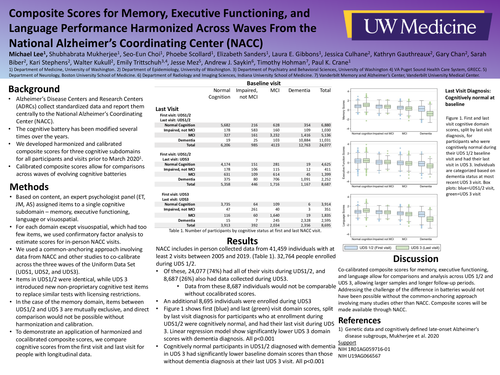AAIC 2022 Research Highlights
Every year, the Alzheimer's Association brings together an amazing lineup for their AAIC conference. We hope you were able to attend some of the incredible sessions and exhibits at AAIC 2022.
Since AAIC is packed with exciting new AD & ADRD research, we thought we would share some research highlights from NACC and around the ADRC community that featured our UDS Data.
NACC Research Highlights
- Jessica Culhane, Charles Mock, Kwun Chuen Gary Chan, PhD, Yen-Chi Chen, and Walter A. Kukull
- Fan Xia, Jessica E. Culhane, Kwun Chuen Gary Chan, C. Dirk Keene, and Walter A. Kukull
- Kathryn Gauthreaux, Peter T Nelson, Charles Mock, and Walter A. Kukull
- Riccardo Manca Anthony N Correro II, Kathryn Gauthreaux, & Jason D Flatt Affiliate
- Paul K. Crane, MD, MPH; Emily H. Trittschuh, PhD; Jesse B. Mez, MD, MS; Andrew J. Saykin, PsyD; R. Elizabeth Sanders, BA; Laura E Gibbons, PhD; Michael L. Lee, PhD, MPH; Phoebe Scollard, MA; Seo-Eun Choi, PhD; Stephanie Rainey-Smith, PhD; Cheyenne K Chooi, BSc (Hons); Brandon E Gavett, PhD; Paul Maruff, PhD; David Ames, MBBS, MD; Jessica E. Culhane, MS; Kathryn Gauthreaux, MS; Kwun Chuen Gary Chan, PhD; Sarah Biber, PhD; Kari Stephens, PhD; Walter A. Kukull, PhD; Logan Dumitrescu, PhD; Timothy J. Hohman, PhD; Shubhabrata Mukherjee, PhD, MS and Alzheimer’s Disease Neuroimaging Initiative
- Michael Lee, Shubhabrata Mukherjee, Seo-Eun Choi, Phoebe Scollard, Elizabeth Sanders, Laura Gibbons, Jessica Culhane, Kathryn Gauthreaux, Kari Stephens, Kwun Chuen Gary Chan, Sarah Biber, Emily H Trittschuh, Jesse Mez, Andrew Saykin, Walter Kukull, Timothy Hohman, Paul Crane
Research Using the UDS
NACC put together a list of posters using the UDS dataset from our Publication Submission system. The list was distributed at the Exhibitor booth at the conference to demonstrate the breadth of research using the UDS.
Check out some of the exciting results that were presented here.
If you are interested in having NACC promote your UDS research, be sure to submit your abstract to our Publication Submission system.


